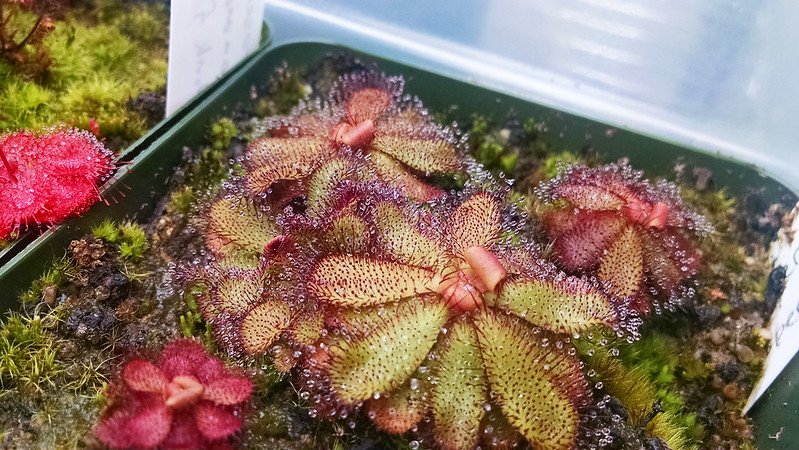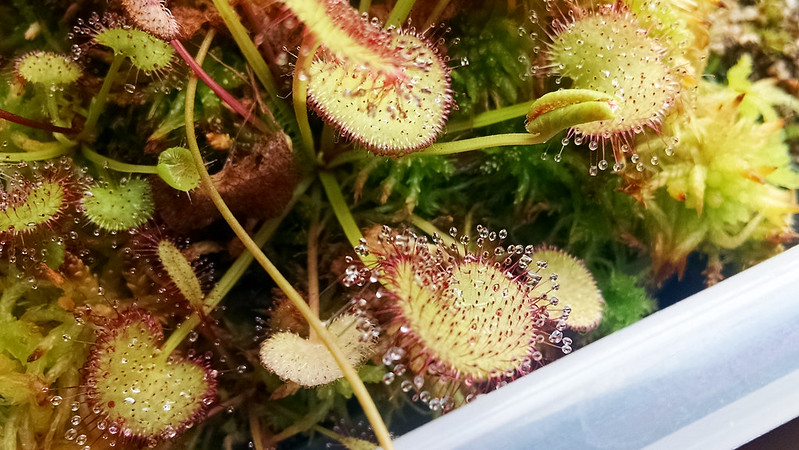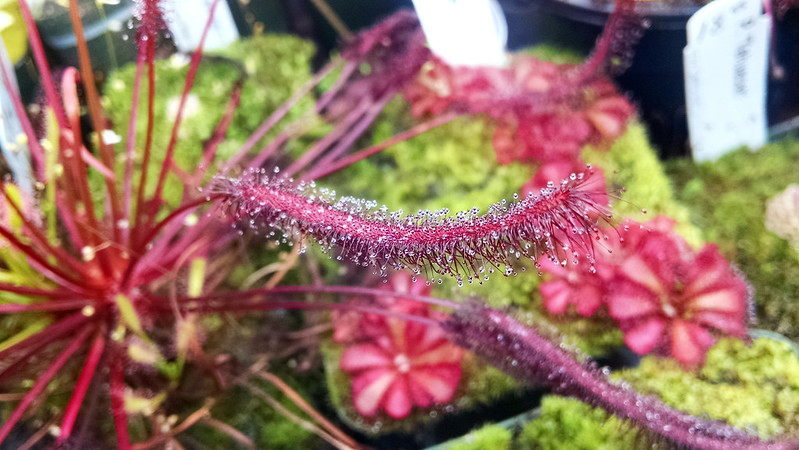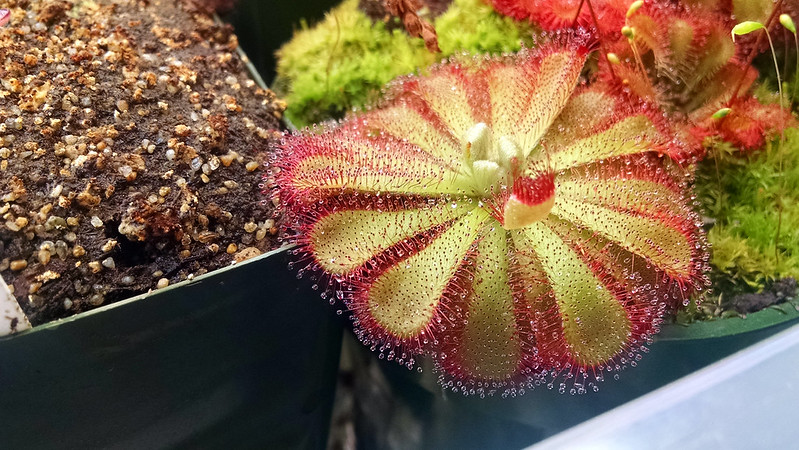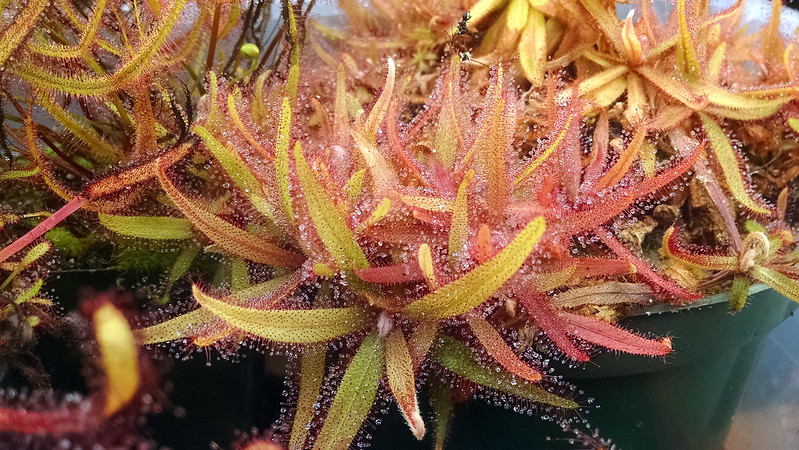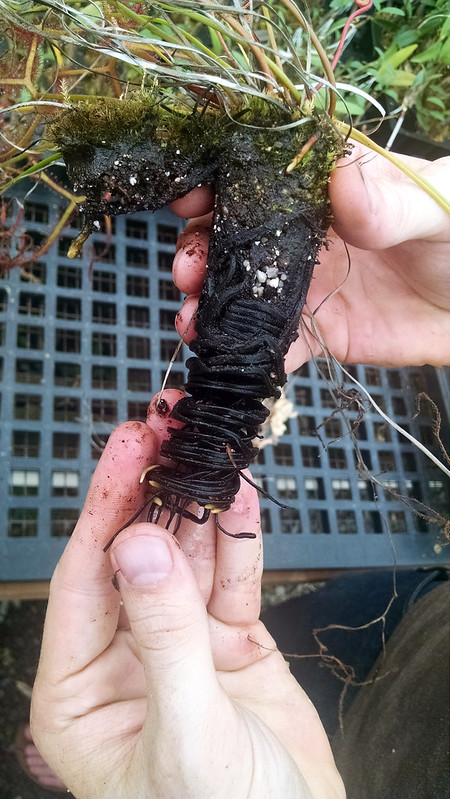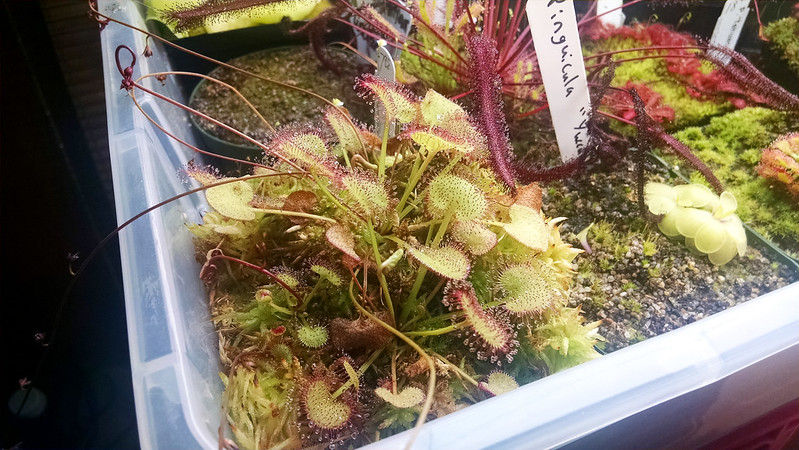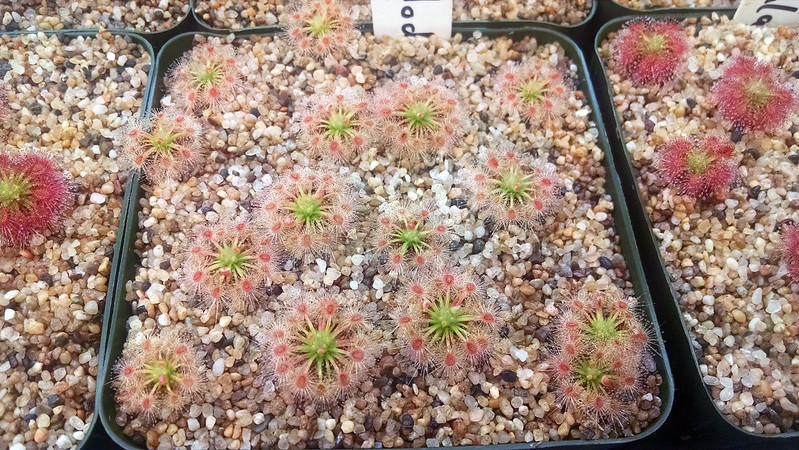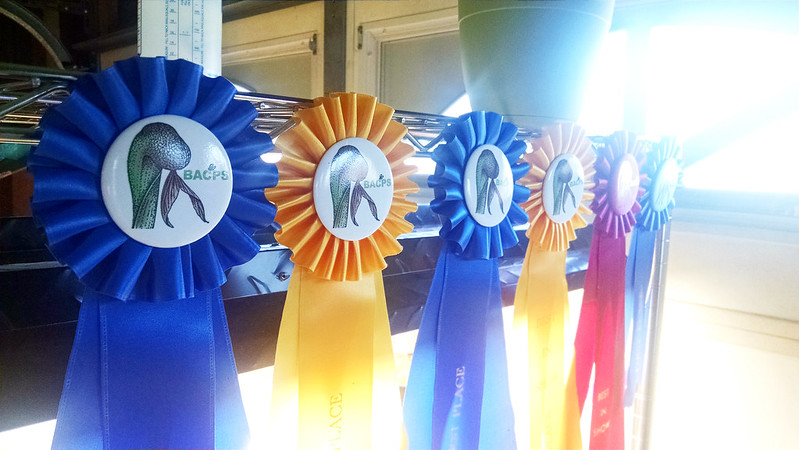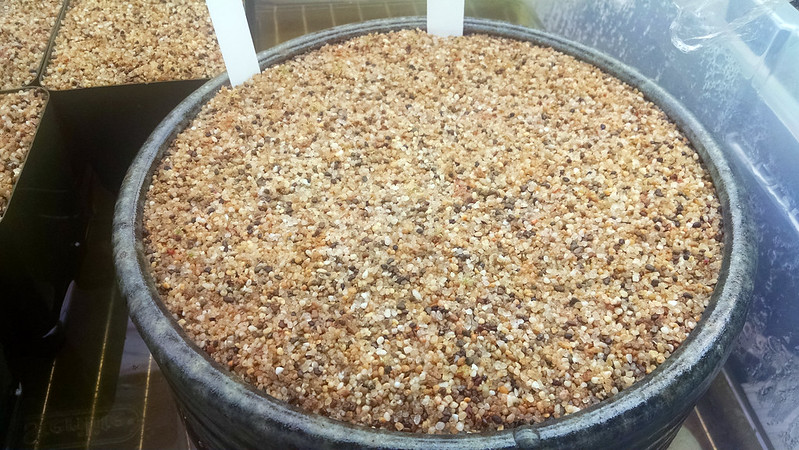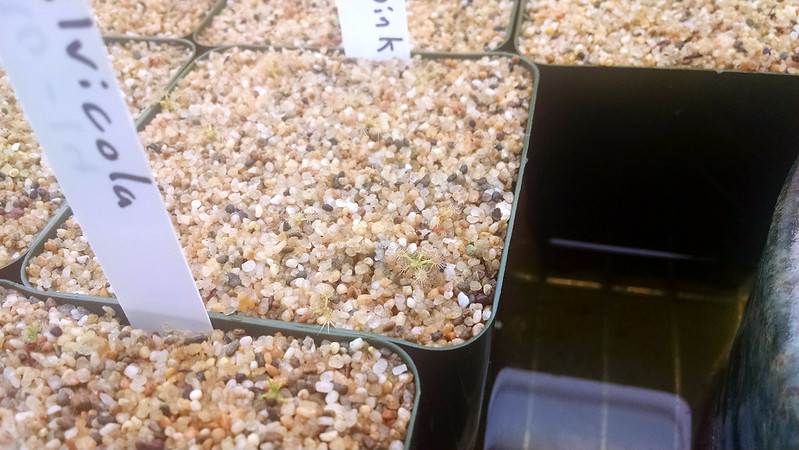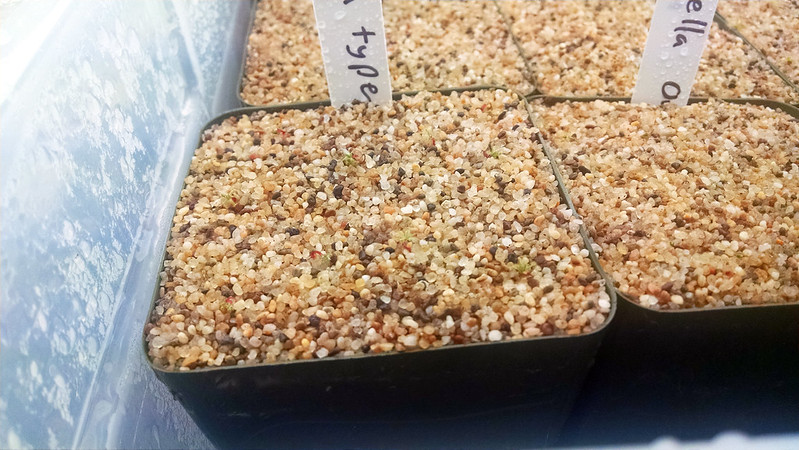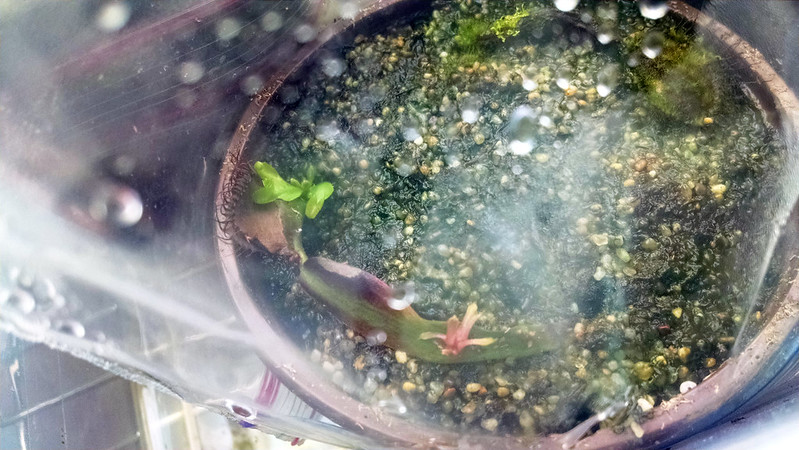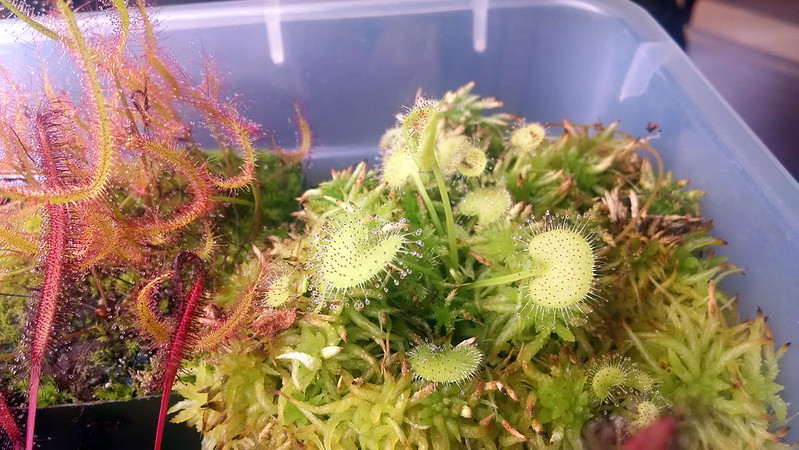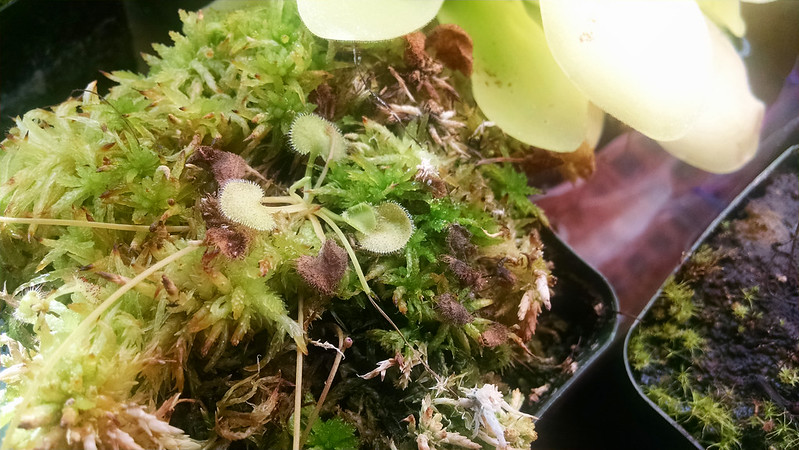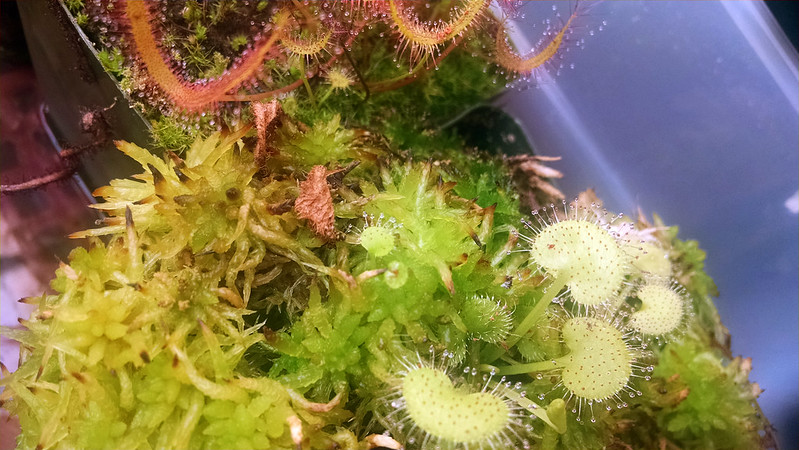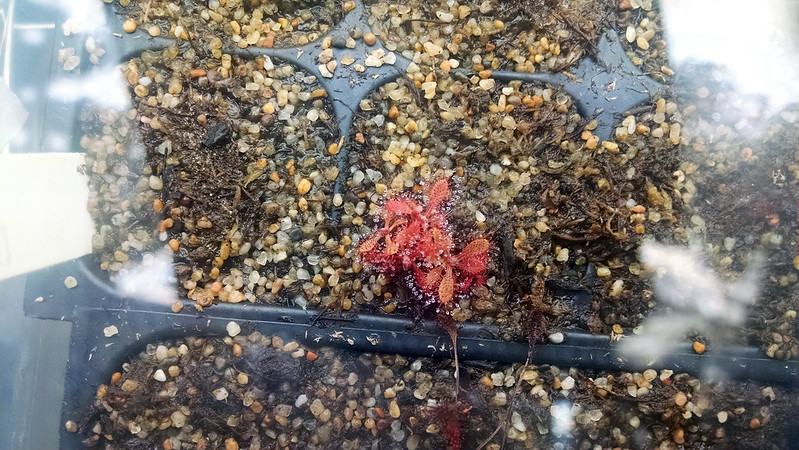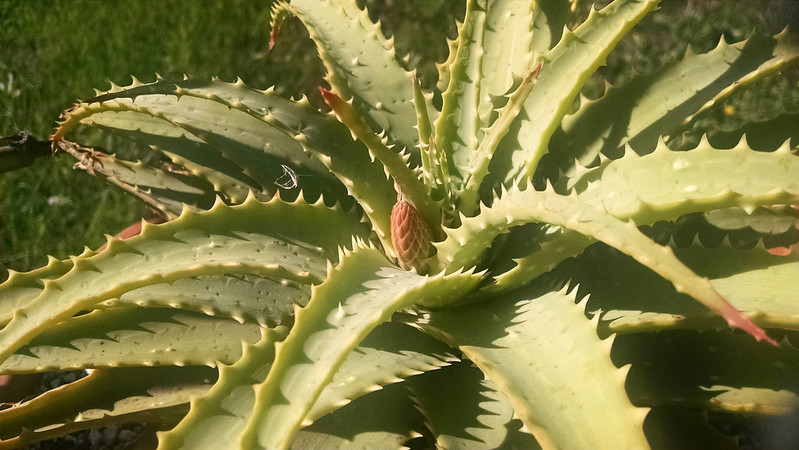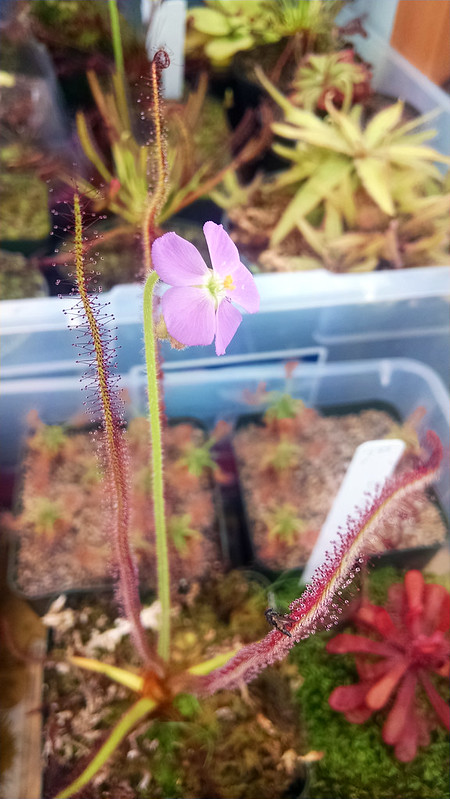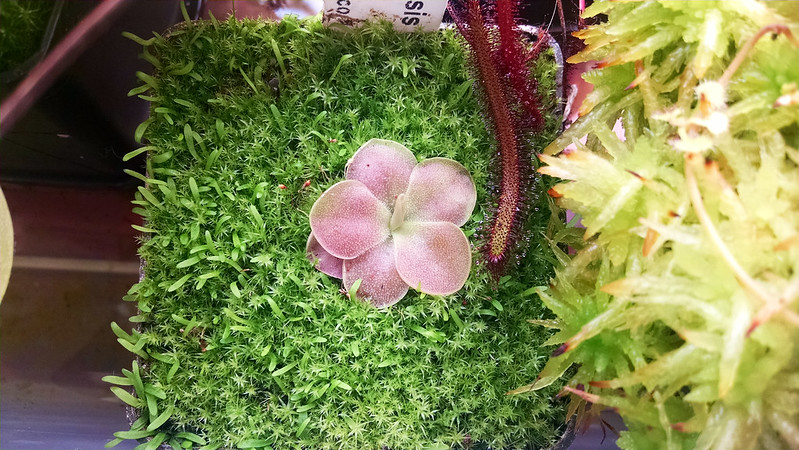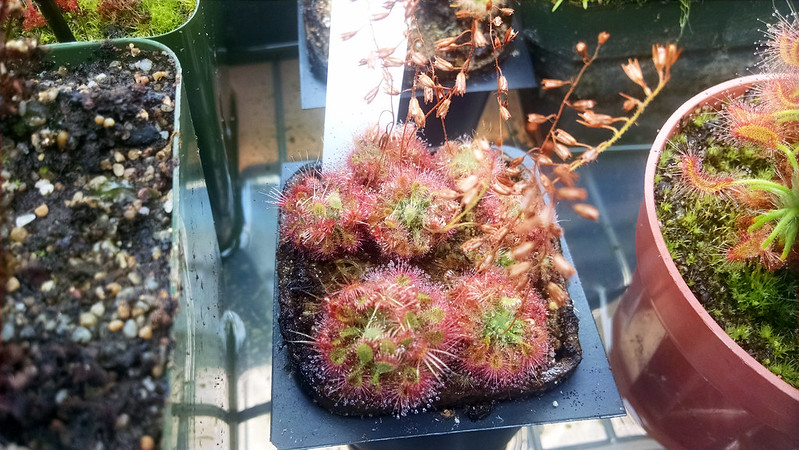So we all know that I haven't been giving my plants quite the attention they deserve lately. But what really drove it home for me was seeing
Drosera prolifera take things into its own hands.
 |
| Thus the name I guess. |
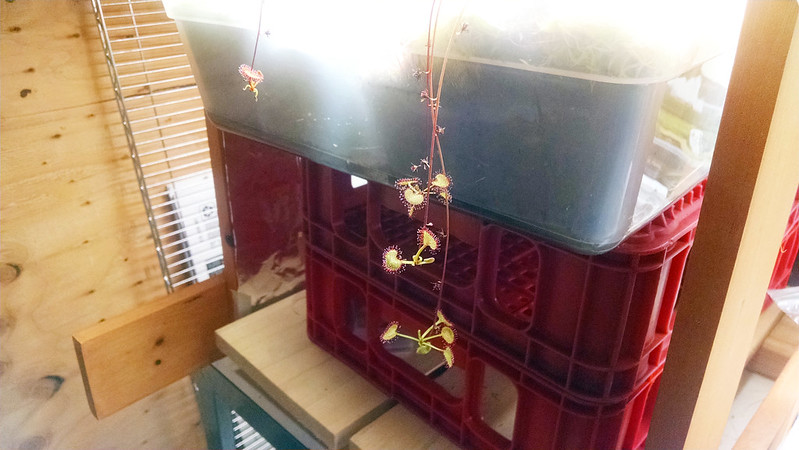 |
| Look at these little plantlets just dangling in midair. Tell me that's not hilarious. |
Hahahah whoops! Let's see what else is going on around the collection.
Drosera 'Emerald's Envy' doesn't seem to have enjoyed the handful of heat waves we've had recently.
 |
| Sorry about the heat little dude. |
I don't think this guy is toast though – there's a new flush of leaves there, and the weather should be cooler over all pretty soon.
As I was preparing this post, I was planning on saying "The smaller
Pinguicula reticulata died while I wasn't looking," but then I went in for a picture and realized it was just dormant.
 |
| So tiny I almost lost it. |
So tiny! The larger plant didn't go dormant, and is looking great.
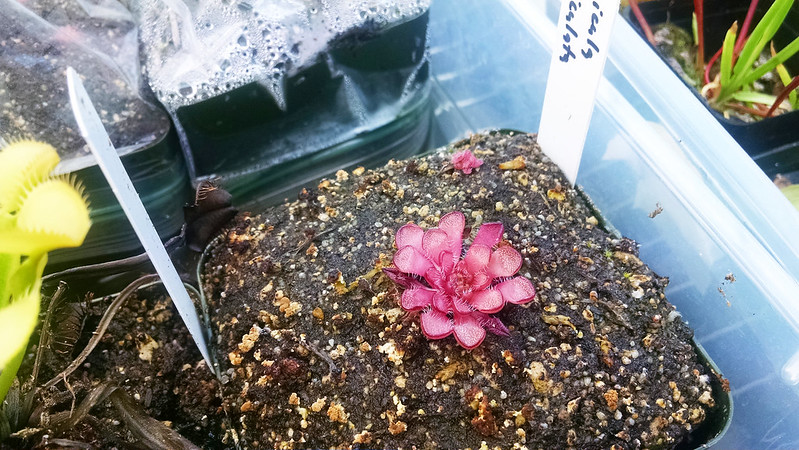 |
| What an unbelievable red. |
Check out that color! I'm swooning here.
The
Drosera occidentalis that I had given up on as a lost cause sprouted up out of nowhere on me.
 |
| I'm continually surprised by how hard it is to actually kill a plant. |
Look at those cute little nubbins! I don't know why everyone isn't an obsessive pygmy collector.
The
Drosera madagascariensis, which I've been needing to trim back for a year, have given up on the stakes and are just splayed out everywhere.
 |
| Stems everywhere! |
There's a lot of flowers stalks I need to trim in there too...
I've missed photographing 2
Byblis liniflora flowers during the last couple months, but it looks like a couple more might be on the way.
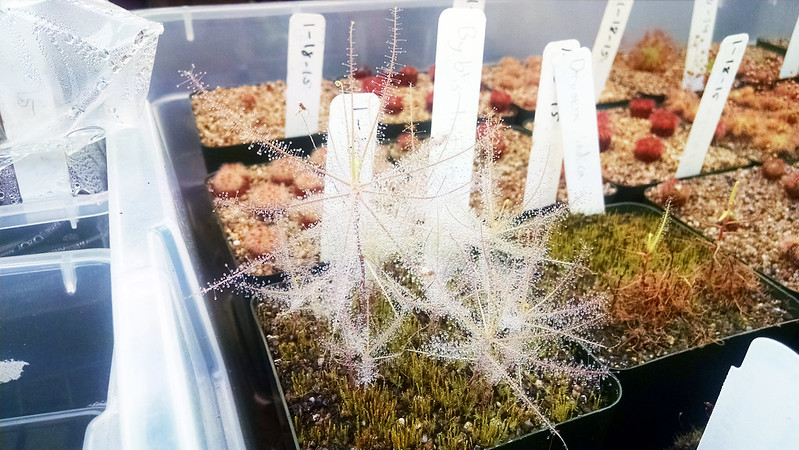 |
| The colors in this plant are so subtle and fine. I love it. |
I really like this plant. It's so fragile-looking.
Finally, the best thing to come out of this period of neglect is my
Pinguicula 'Aphrodite', which is looking absolutely stunning right now.
 |
| Again, thus the name. |
The color plus the dew is nuts. And it's offsetting!
All told the collection is still looking pretty good inside (don't ask me about my
Sarracenia – that's for another, more somber post). I'm really fortunate that the climate in the Bay Area is very sundew-friendly, and that my growing setup is so self-regulating. The timer keeps the lights on the right cycle, and the cool nights keep the plants from frying. I even got quite lax with water – letting my trays go dry for several days at a time – and the plants didn't noticeably suffer.
This is not to say that I could ignore my plants forever. I've got a lot of trimming and a bit of repotting to do to keep things tidy in my collection. Fortunately the Bayer 3-in-1 seems to have finally taken care of my aphid problem. Looking forward to a good autumn. It's almost gemmae season!

















